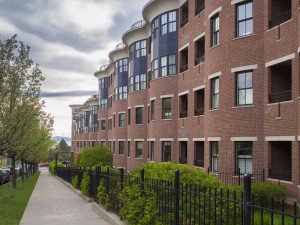Share This
Related Posts
Tags
HUD Cuts
By Erica Rascón on May 16, 2014 in News
The U.S. Department of Housing and Urban Development (HUD) granted $1.8 billion to public housing authorities throughout the nation. The funds will allow properties to make major renovations to existing properties that improve habitability and sustainability. The grant falls woefully short of the estimated $25.6 billion needed to bring the nation’s 1.1 million public housing units up to par. The inadequate award signals the continuation of the affordable housing crisis.
sustainability. The grant falls woefully short of the estimated $25.6 billion needed to bring the nation’s 1.1 million public housing units up to par. The inadequate award signals the continuation of the affordable housing crisis.
Each state and many US territories received Capital Fund Programs grants to construct, repair, and renovate public housing communities. Projects range from necessary structural repairs to upgrades that improve sustainability and the cost-effectiveness of the properties.
The Capital Needs in the Public Housing Program suggests that the nation’s 3,100 public housing authorities will require nearly 12 times the awarded amount to make units “decent and economically sustainable.” The recent award follows a string of budget cuts to HUD, USDA Rural Development, and other affordability-centered programs. The President’s proposed FY 2015 budget outlines further cuts. HUD is estimated to lose $32.6 billion.
The lack of funding adds to a continuing concern over the affordable housing crisis. Across the board, the nation’s lowest-income members encounter mounting barriers to housing. National Low-Income Housing Coalition’s (NLIHC) “Out of Reach” report concludes that there are only 31 affordable housing units for every 100 families in need; Urban Institute states that for every 100 extremely low-income (ELI) renter households, there are only 29 affordable and available rental units. Not a single county in the nation has reached equilibrium between ELI households and available affordable housing.
While a lack of available units is part of the problem, it isn’t the sole concern. Even with units available, some families cannot obtain the assistance needed to move in. According to the Center for American Progress, only one in four households eligible for a rental subsidy is able to get one.
America’s most vulnerable populations—low-income seniors, people with disabilities, the working poor—are encountering tough competition for available housing and subsidies. Low-to-middle income families that faced crisis poverty during the recession have added to the demand.
At the same time, many affordable properties are drawing to a close in their 15 year Low-Income Housing Tax Credit (LIHTC) contracts. These properties may decide to price units at the fair market rate, further limiting the amount of affordable units available.
Industry leaders and government officials are exploring a number of ways to improve market conditions. Properties approaching the end of LIHTC contracts see the recapitalization of affordable housing as a lifeline to keep properties affordable by supplementing public grants with private funding. In such scenarios, the Council of Large Public Housing Authorities estimates that new rents could be as much as $350 monthly higher than current public housing rates. This is clearly not a feasible solution for affordability.
The President’s FY 2015 budget proposal seeks to adjust current Rental Assistance Demonstration (RAD) regulations by removing the 60,000 unit cap. If approved, an unlimited quantity of at-risk public and assisted housing units could be converted to long-term, Section 8 rental assistance contracts.
